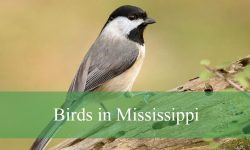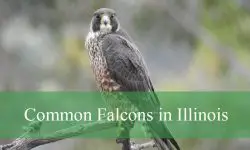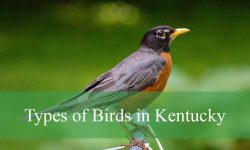Roaches in Texas form a diverse and multispecies population, thriving in a variety of habitats across the state. From bustling urban centers to peaceful countryside, these insects adapt to their surroundings, posing a challenge to residents and pest control professionals alike.
In this article, we cover 39 types of roaches that can be found in Texas to help you identify them and learn how to control them.
Different Types of Roaches in Texas
Small Yellow Cockroach
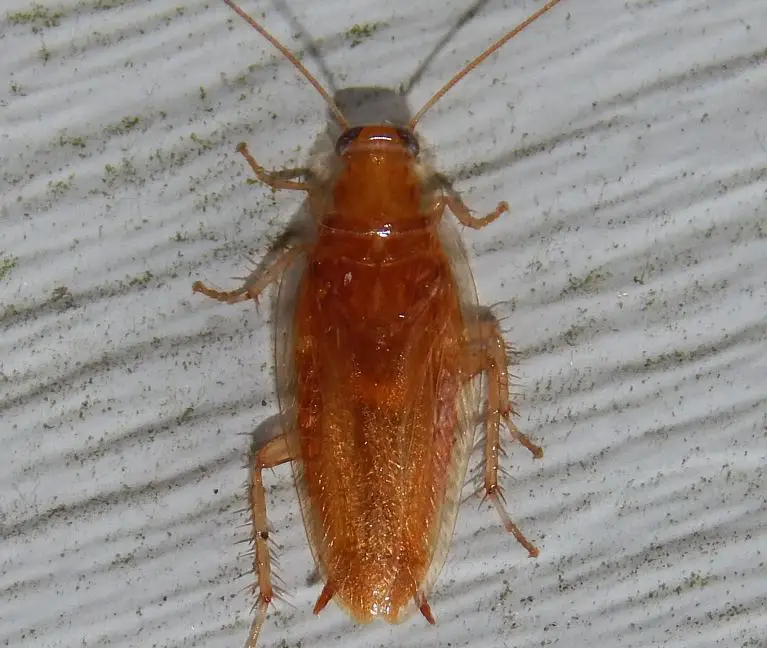
The Small Yellow Cockroach (Cariblatta lutea) is indigenous to the United States, measuring about 7mm long. Pale brown/yellow in color with brown heads adorned with a band between the eyes and dark spots on the face.
Typically found in leaf litter, pine needle litter, and various plants, they inhabit areas near houses and disturbed environments.
Field Cockroach
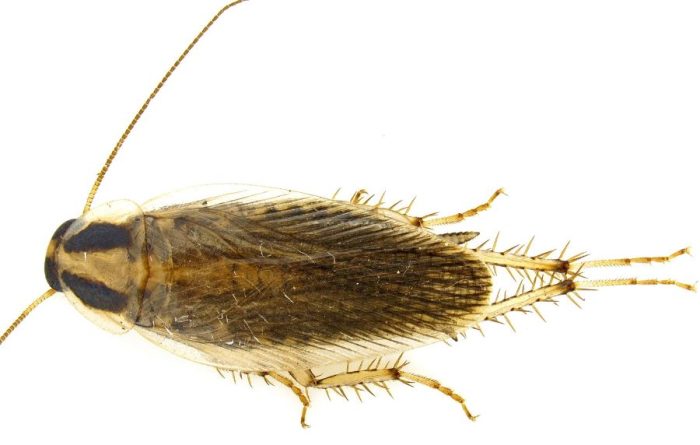
The field cockroach (Blattella vaga) is a winged species capable of flight, reaching up to 12mm in length. Sporting dark stripes on the pronotum and tan to light brown coloration, they primarily inhabit outdoor environments but may venture indoors in search of moisture.
Feeding on decaying vegetation and occasionally smaller insects, they seek shelter and moisture under debris, stones, mulch, and weedy vegetation, often attracted to lights.
Asian Cockroach
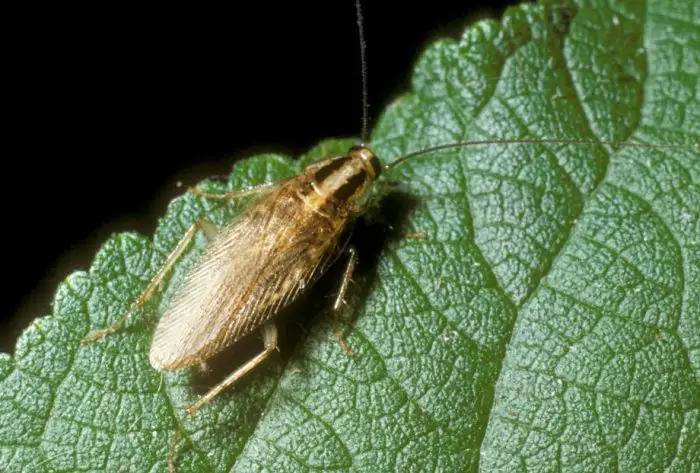
The Asian cockroach (Blattella asahinai), discovered in Japan in 1981, measures about 1.6cm long, tan to dark brown with distinct stripes on the head. Resembling German cockroaches, they’re commonly found around homes, deemed foreign pests.
Susceptible to insecticides, scatter baits are effective in controlling their populations, aiding in their management.
Oriental Cockroach
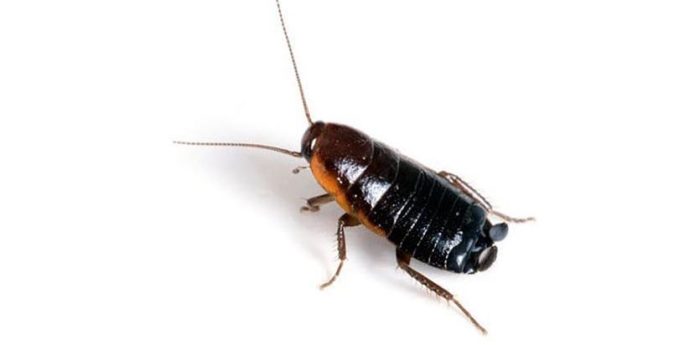
The Oriental cockroach (Blatta orientalis), also known as the black beetle, boasts a dark, glossy brown to black hue and can grow up to 2.9cm, with females slightly smaller. Preferring damp, dark environments like sewers and basements, they move slowly and are vectors for various diseases like dysentery and Salmonella.
Eradicating them from homes is challenging as insecticides may not fully eliminate them due to their ability to lay eggs after treatment.
Dark Wood Cockroach
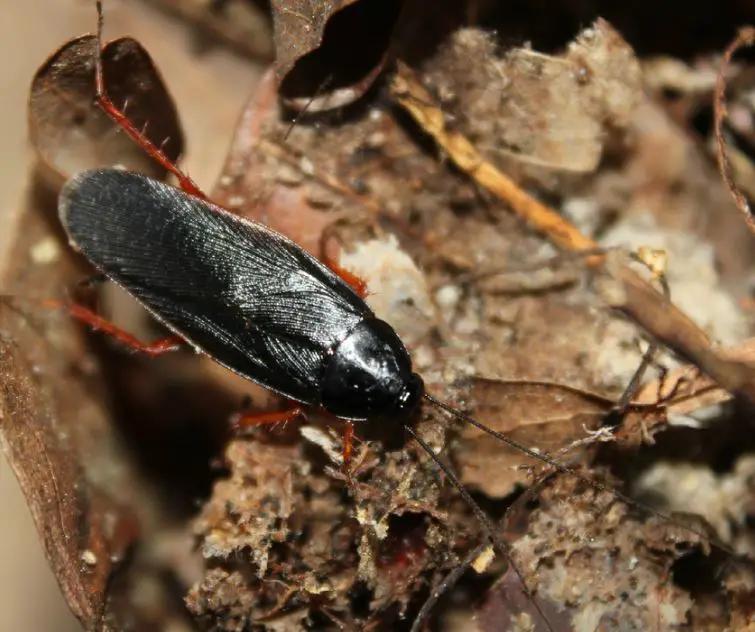
The Dark Wood Cockroach (Ischnoptera deropeltiformis) is a non-pest species primarily found in wooded areas, rarely entering homes. With dark brown to black bodies and distinctive orange to red legs, they’re sometimes called “sexy leg cockroaches.
Attracted to night lights, they reach lengths of up to 14.5mm. Males display more yellow and orange on their legs, while females are shiny black with hints of brown.
Bilunate Cockroach
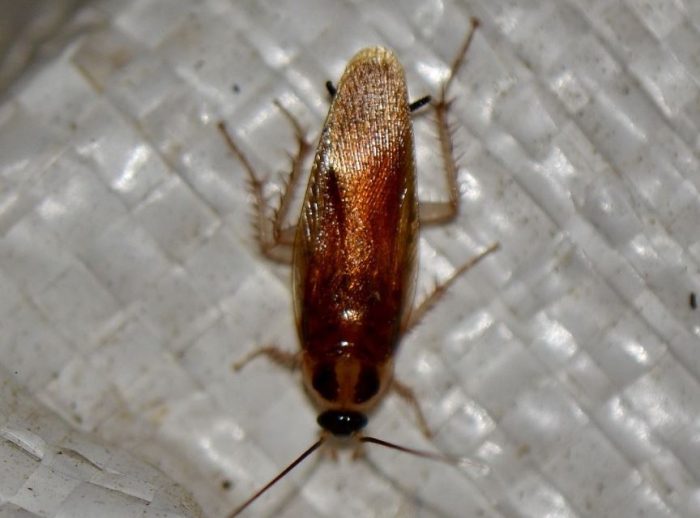
The Bilunate cockroach (Ischnoptera bilunata) males reach 16mm and females 18mm in length. With climbing and flying abilities, they favor moist environments. Popular among exotic pet enthusiasts as feeder insects due to their rapid breeding, one female can yield hundreds.
While not burrowers, they’re commonly found outdoors beneath leaf litter and organic debris.
Pennsylvania Wood Cockroach
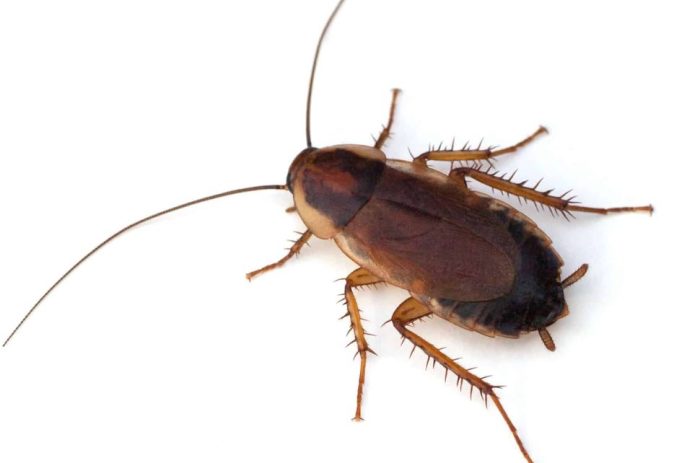
The male Pennsylvania Wood Cockroach (Parcoblatta pennsylvanica) features a dark brown body with yellow thoracic margins and wing fronts, while females possess short, non-functional wings. Males, larger at 24.5mm, are capable flyers but prefer open areas with sparse ground cover, often congregating on tree trunks and branches at night.
During mating season in May and June, they may inadvertently enter homes attracted by outdoor lights, particularly in wooded regions. Outdoor perimeter treatments around doors, windows, patios, porches, and foundations can help deter infestations.
Compsodes Schwarzi
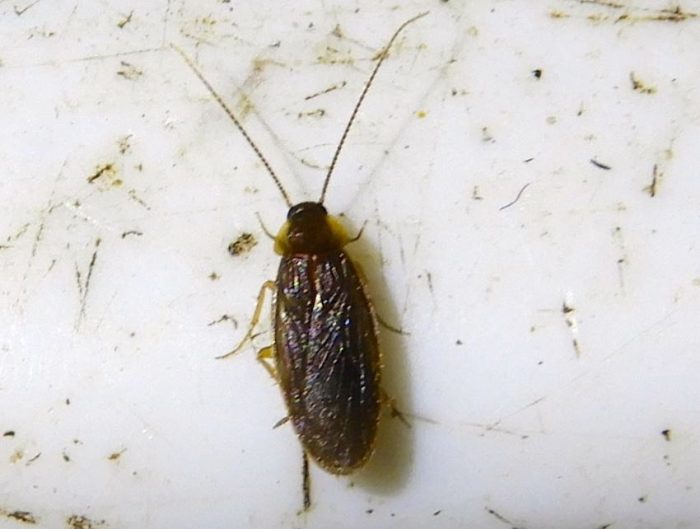
Compsodes Schwarzi are petite cockroaches favored by exotic pet enthusiasts for feeding. Males reach 7mm with wings, while females grow to 5mm.
Thriving in moist habitats abundant with leaf litter and bark, they subsist on decaying plant matter. Despite their diminutive size, they exhibit slow growth and brief lifespans, contributing to ecosystem decomposition processes.
Fulvous Wood Cockroach
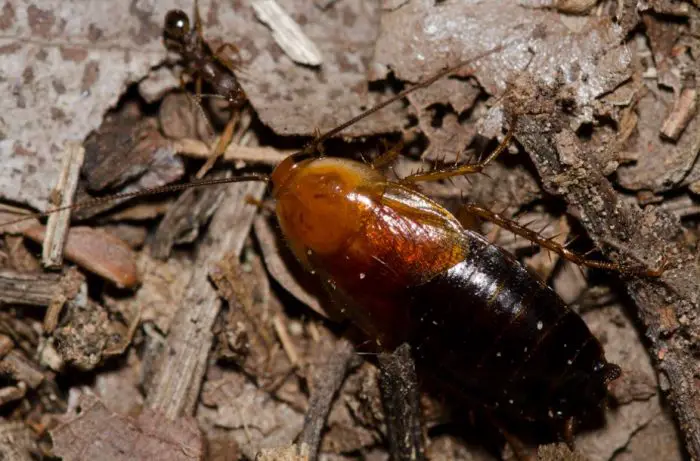
Endemic to the United States, the Fulvous Wood Cockroach (Parcoblatta fulvescens) measures 13mm. Males boast slender bodies with long forewings, while females feature a red/brown head and pronotum and a dark brown abdomen and legs.
Preferring grassy and heavily vegetated areas like barrier beach forests and pine forests, they seek refuge under leaves, pine needles, and loose bark, emerging only at night.
Western Wood Cockroach
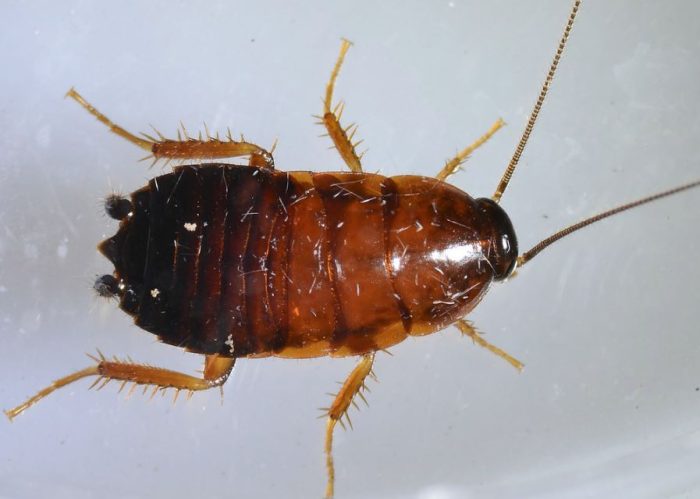
The Western Wood Cockroach (Parcoblatta americana) exhibits sizeable variations in color. Males, with fully developed wings, range from dark brown to light red/tan, while females lack wings and display a shiny red/orange hue with a darker abdomen.
Growing up to 14.8mm for males and 13.3mm for females, they seek shelter in harvester ant nests during the day and emerge at night to feed on debris.
Brown-Banded Cockroach
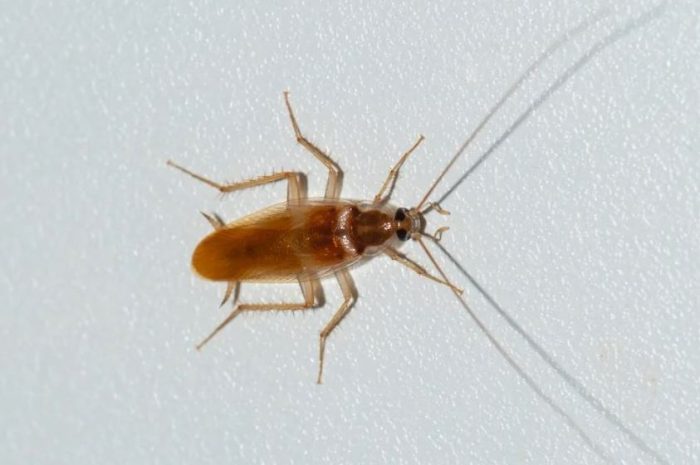
Brown-banded cockroaches (Supella longipalpa) reach approximately 14mm in length, displaying tan to light brown hues with light-colored banding on wings and abdomen. While males’ wings cover the abdomen, females’ wings are shorter, leaving part exposed.
These scavengers have a varied diet, consuming organic matter like decaying substances.
Brown Cockroach
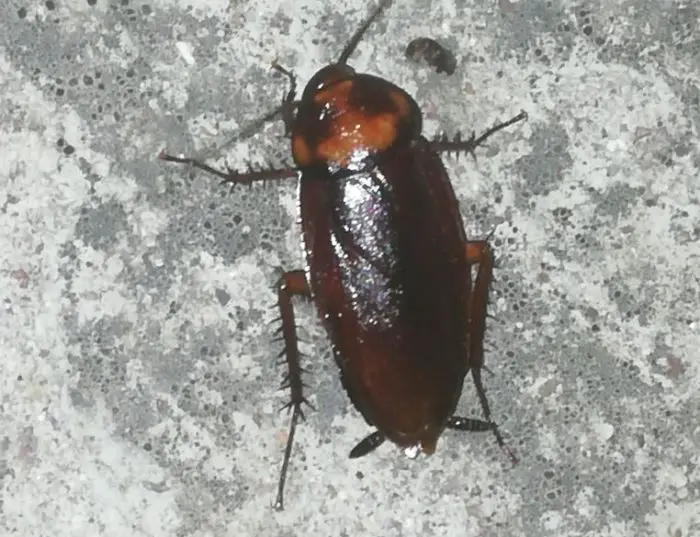
Brown cockroaches (Periplaneta brunnea) from the Blattidae family, native to Africa, have spread worldwide. Resembling American roaches, they’re darker with fully developed wings, growing to around 4cm.
In colder climates, they become household pests, thriving indoors where warmer temperatures prevail.
Florida Woods Cockroach
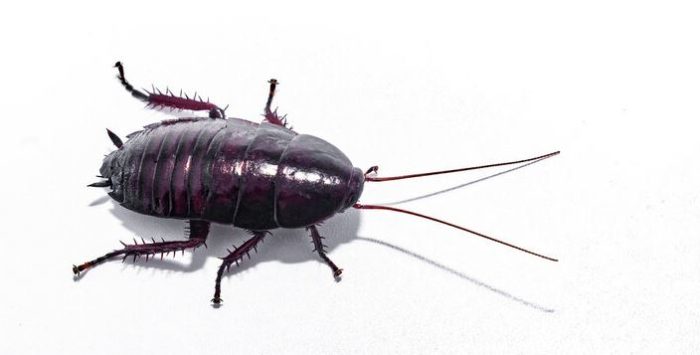
The Florida Woods Cockroach (Eurycotis floridana) reaches 40mm in length and emits a foul odor when threatened, earning the nickname “Florida skunk roach.” Slow-moving and preferring damp environments, they occasionally enter homes but aren’t significant pests.
Typically found under leaf litter and wood, sealing cracks, fixing broken screens, and plumbing gaps helps prevent their entry into homes.
Tawny Cockroach
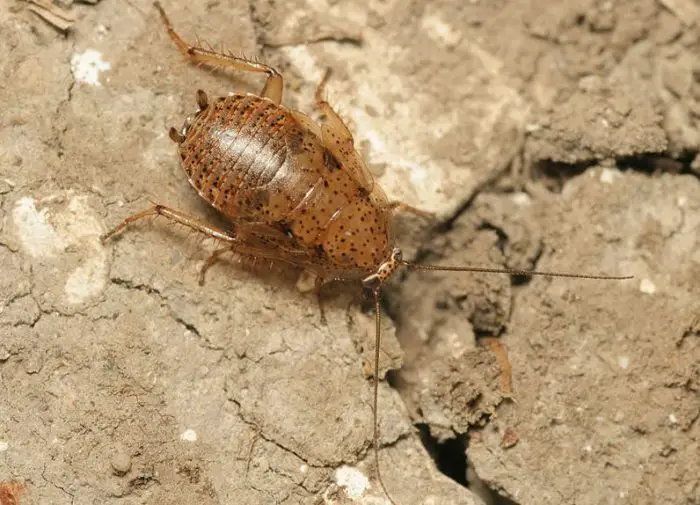
The Tawny Cockroach (Ectobius pallidus), or Mediterranean Spotted Cockroach, measures 9.5mm. Light brown with a white head and transparent pronotum, they feature red to brown spots on their pronotum and forewings.
Both males and females are capable of flight and are commonly found in woodlands and meadows, seeking shelter in leaf litter, trees, and brush.
Boll’s Wood Cockroach
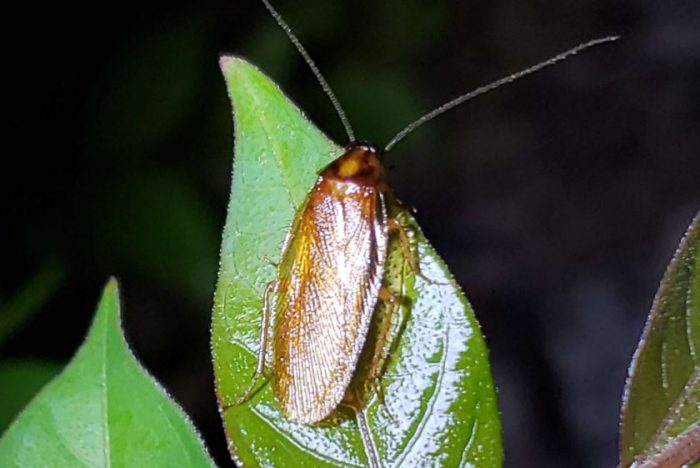
Boll’s Wood Cockroach (Parcoblatta bolliana) is a small species, with females chocolate brown and males shiny dark brown with yellow markings. Males are slender with functional hind wings.
Preferring the outdoors, they hide under old boards, pine straw, cow dung, and grass.
Eremoblatta Subdiaphana

Eremoblatta subdiaphana males possess fully functional wings, contrasting with wingless females. Reaching 30mm, they’re drawn to light in desert and sandy regions, burrowing into sandy soil and dunes for shelter.
Remarkably, they can survive for weeks without water.
Virginia Wood Cockroach
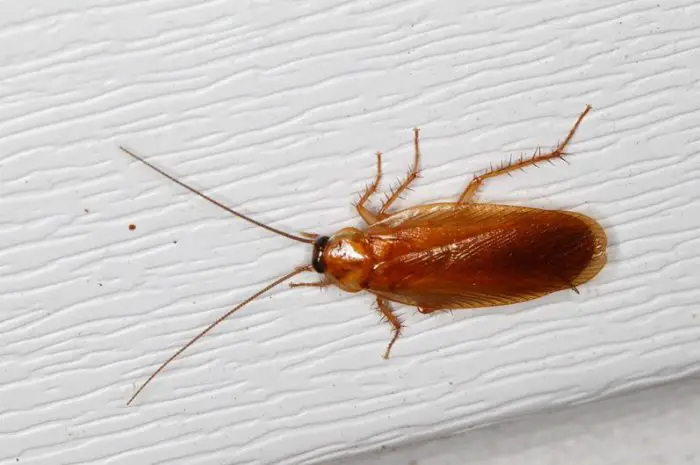
The Virginia Wood Cockroach (Parcoblatta virginica), reaching about 1cm, features fully winged males and orange-colored bodies, while females tend toward rusty brown.
Thriving on decaying organic matter, they primarily inhabit outdoor environments but may inadvertently enter homes. Employing preventative measures like sealing doorways and plumbing openings can deter their intrusion.
Desert Wood Cockroach
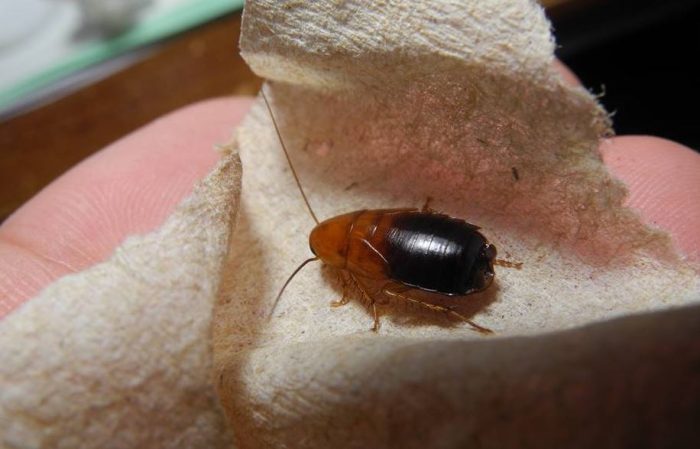
The Desert Wood Cockroach (Parcoblatta desertae), endemic to Texas, exhibits sexual dimorphism with fully developed wings in males and wing pads in females. Males are dull-colored, while females feature orange heads and undersides with a rusty abdomen.
Found in south-central Texas, particularly in mountainous regions like the Chisos Mountains and Shovel Mountain, they dwell in desert and semidesert habitats, seeking refuge under leaf and pine litter.
Little Gem Cockroach
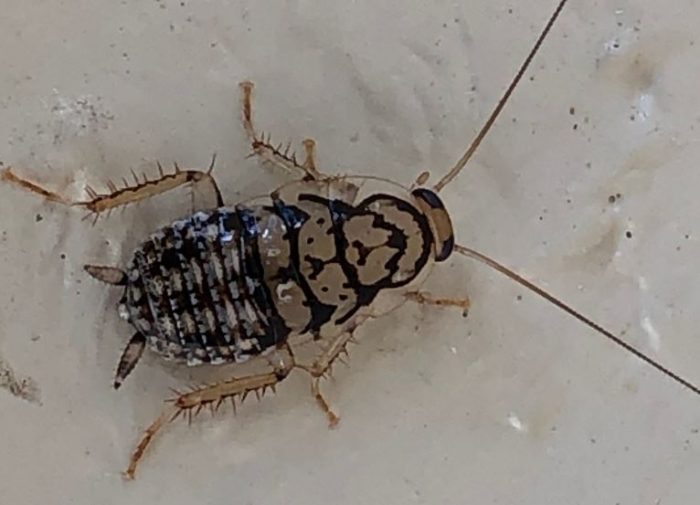
The Little Gem Cockroach (Aglaopteryx gemma) attains lengths of up to 15mm, showcasing a stunning pattern of light brown and tan. Common in Texas and endemic to the Caribbean, they inhabit various habitats from beaches to pine hammocks, favoring arboreal environments.
Exceptionally swift and challenging to catch, they occasionally enter homes but can be effectively managed with standard insecticides.
Small Yellow Texas Cockroach
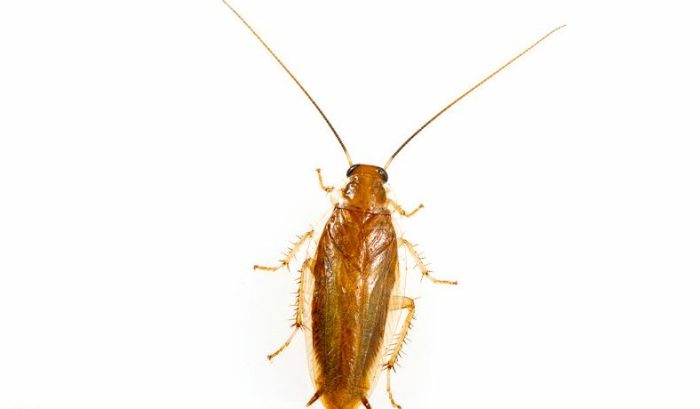
The Small Yellow Texas Cockroach (Chorisoneura texensis) is exclusive to Texas, measuring a mere 8.4mm in length. Nearly transparent, they appear yellowish. Typically dwelling beneath leaf litter, they rarely invade indoor spaces.
Euthlastoblatta Abortiva
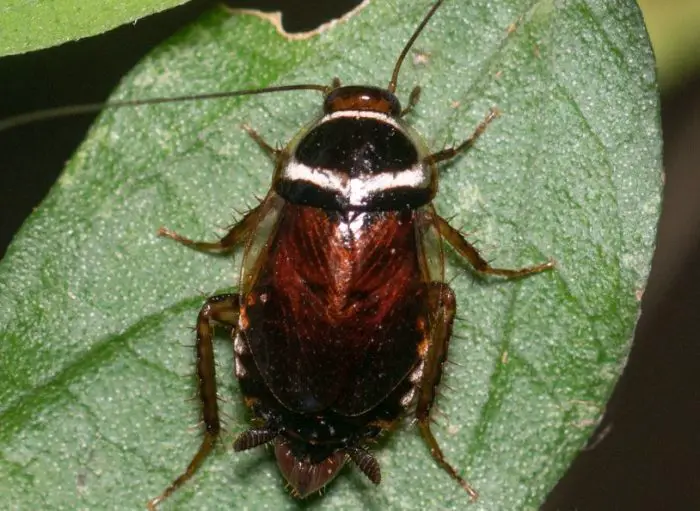
Euthlastoblatta abortiva, a highly elusive cockroach, is rarely sighted or encountered. Nocturnal by nature, they burrow underground, making them difficult to study. Limited information is available, but it’s known their nests primarily consist of adult females.
Desert Cockroach
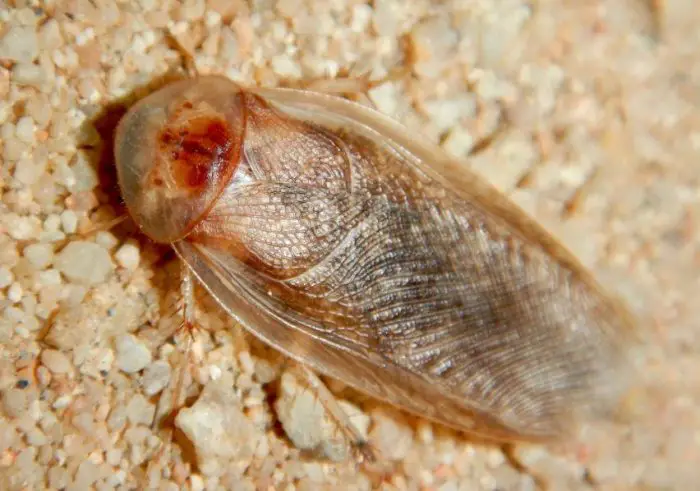
Desert cockroaches (Arenivaga investigata) have a unique ability to absorb water vapor from the atmosphere, enabling weight gain. This process is facilitated by mouth protrusions with bladder-like extensions, suggesting these structures serve as sites for condensation.
Harlequin Roach
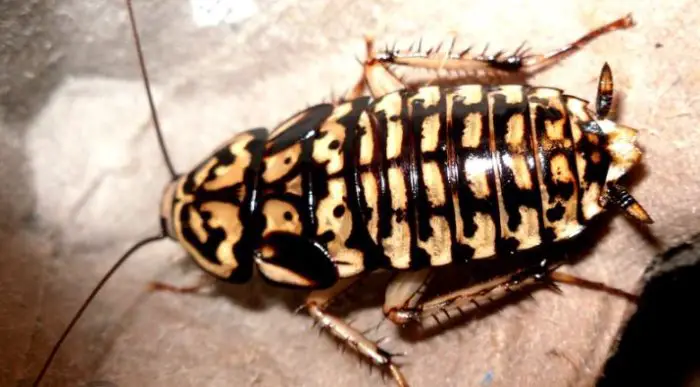
The Harlequin roach (Neostylopyga rhombifolia), noted for its vibrant colors and patterns, was first described in 1911. These invasive pests predominantly reside outdoors but may infiltrate indoor spaces. Recognizable by their black and yellow pattern and short front wings, they reach approximately 30mm in length.
American Cockroach
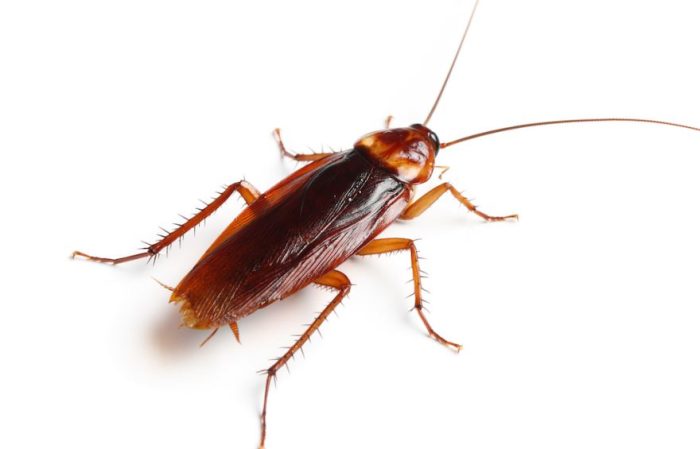
The American cockroach (Periplaneta americana), often termed the water bug, is the largest cockroach species in the United States. Growing up to 4cm long and 7mm tall, they sport a reddish-brown hue with yellow pronotum margins. Their flattened oval bodies enable swift movement, slipping into narrow crevices when threatened.
Thriving in moist environments, they dwell in basements, sewers, and even migrate indoors during colder seasons, seeking warmth and sustenance. Control measures involve insecticides and sealing entry points to homes.
Pale-Bordered Field Cockroach
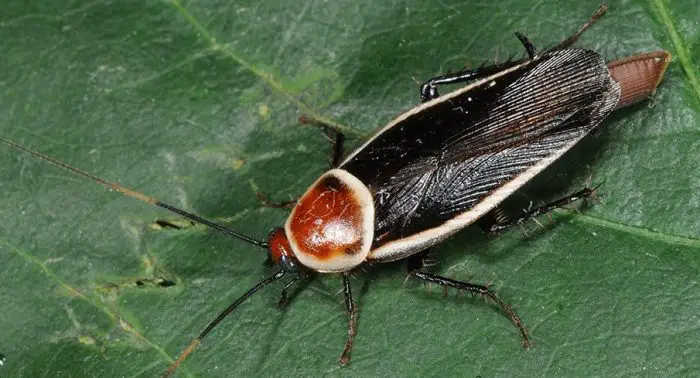
The Pale-Bordered Field Cockroach (Pseudomops septentrionalis) is a diminutive species, measuring around half an inch in length. Sporting a striking appearance, they feature red head shields, yellow markings on their pronotum borders, and wings adorned with orange hues. Despite their vivid colors, they’re elusive creatures, adept at concealment.
These scavengers have an eclectic diet, consuming everything from grease to sweets and even resorting to cannibalism in times of scarcity. Typically outdoor dwellers, they may inadvertently infiltrate homes and barns seeking darkness and moisture, entering through crevices that can be sealed to mitigate future infestations.
Surinam Cockroach
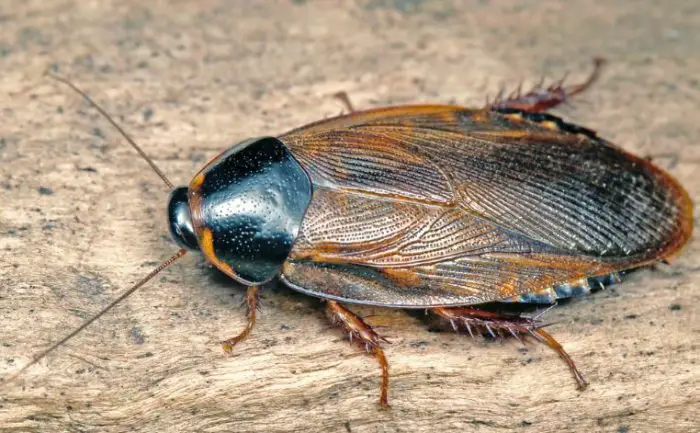
The Surinam cockroach (Pycnoscelus surinamensis), nicknamed the greenhouse cockroach, is a soil-dwelling species prevalent in tropical and subtropical regions. Measuring approximately 0.98 inches (25mm) in length, they sport a dark brown to black body with light brown wings and a distinctive white band on the pronotum.
Despite limited flight capability, they infest gardens, plantations, and greenhouses, where they feed on plant tissue during the night. While not typically household pests, indoor populations can be managed with sprays, while outdoor control measures target woodpiles, mulch, and foundation plantings.
Smoky Brown Cockroach
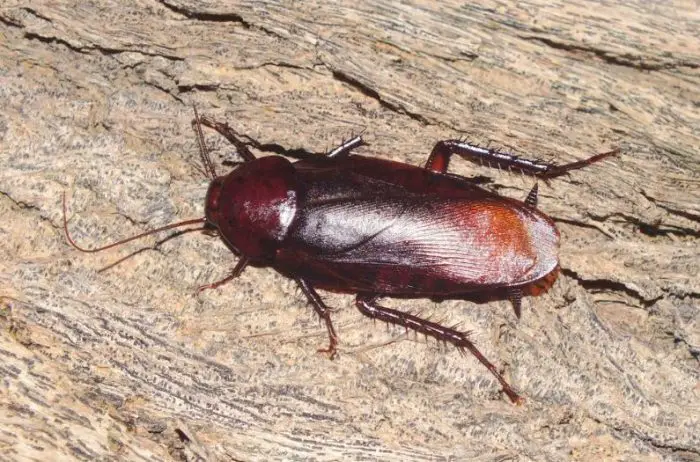
The Smoky Brown Cockroach (Periplaneta fuliginosa) is a sizable species, reaching up to 1.25 inches in length, distinguishable by its dark brown to mahogany coloration. Similar to the American cockroach, they venture indoors for sustenance and shelter but relocate outdoors in warmer seasons.
Thriving in warm, moist climates, they often inhabit building perimeters, seeking refuge indoors during colder weather.
Boll’s Sandroach
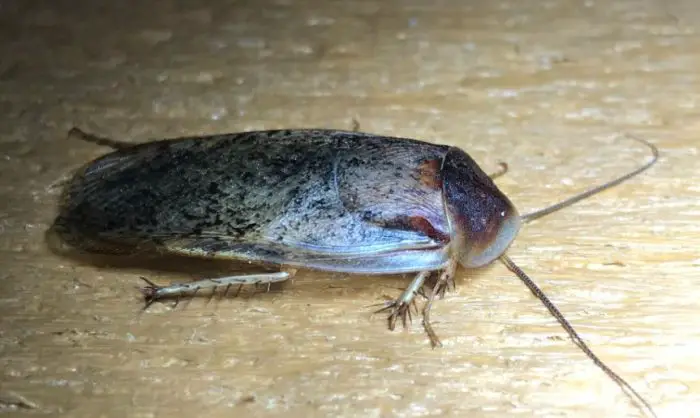
Boll’s Sandroach (Arenivaga bolliana) males exhibit color variations, often ranging from black to brown, featuring a broad pale cephalic margin on the pronotum and concealed genital hooks. Females, larger in size, boast a toughened, leathery dorsal surface adorned with minute hairs, distinguishing them from their male counterparts.
Banana Cockroach
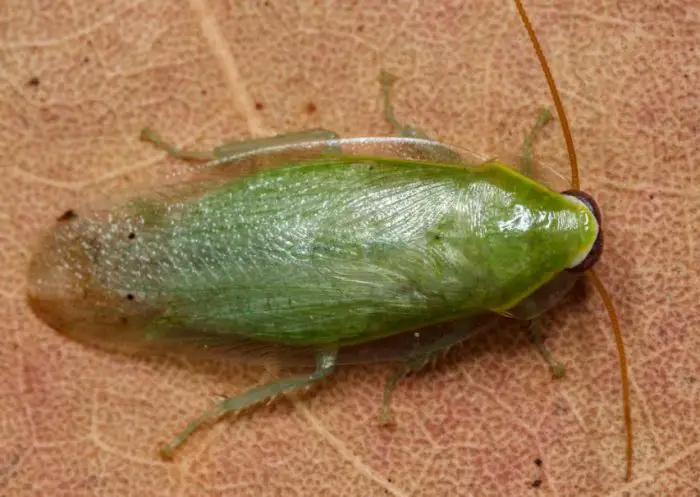
The banana cockroach (Panchlora nivea), known as the Cuban or green cockroach, thrives in tropical and subtropical regions. Females reach 24mm, males 15mm. Pale green to yellow-green, they feature a yellow line along their sides.
Typically outdoor dwellers, they’re not household pests but popular among exotic pet enthusiasts, occasionally serving as food for other pets.
German Cockroach
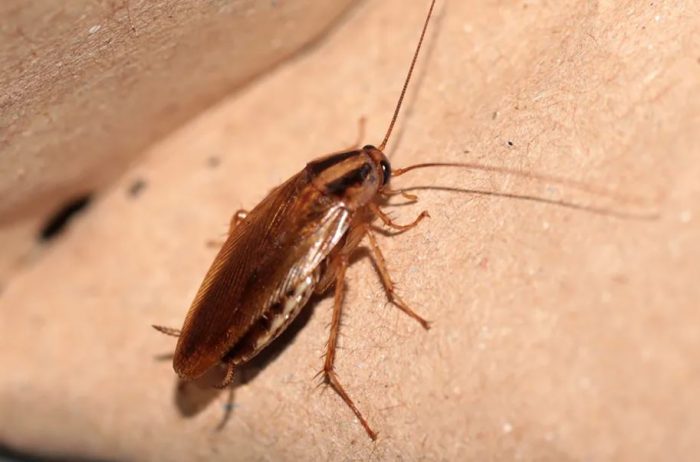
German cockroaches (Blattella germanica) typically measure no more than 1.6cm, ranging from tan to black with two dark parallel streaks on the pronotum. Despite having wings, they’re poor flyers, often gliding.
As domestic pests closely related to Asian cockroaches, they excel in building infestations, resilient against control measures due to short reproductive cycles, adept hiding, and absence of natural predators.
Turkestan Cockroach
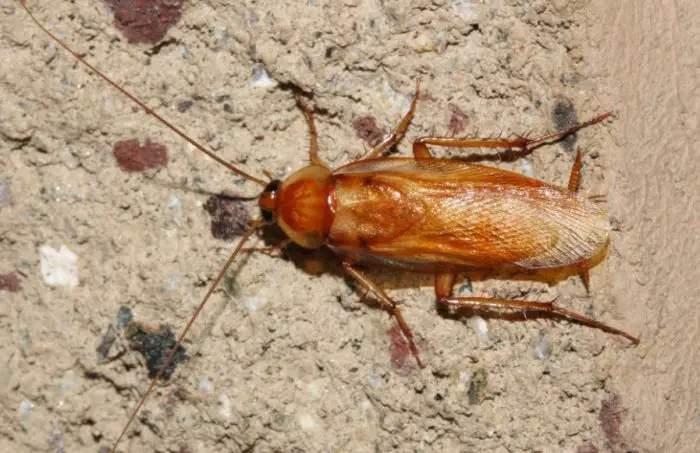
The Turkestan cockroach (Shelfordella lateralis), also called the rusty red cockroach, reaches approximately 3cm in length. Males exhibit brown/orange to red hues with slender bodies and yellow wings, while females are darker with cream markings and shorter wings.
Though not aggressive, they may seek shelter indoors, becoming pests. Males, attracted to outdoor lights and equipped with flight capability, are more commonly encountered.
Australian Cockroach
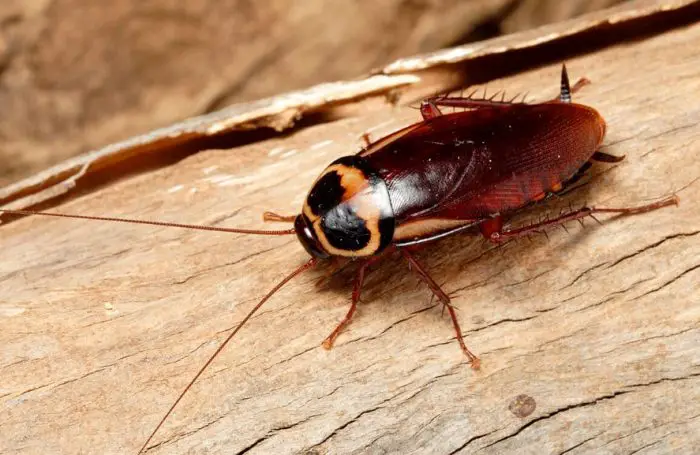
Australian cockroaches (Periplaneta australasiae) are tropical species reaching 35mm in length. Brown with a pale lateral stripe and pronotal margin, they resemble American roaches but are smaller. Preferring warm climates, they may seek shelter indoors during colder months, thriving in moist environments.
Often found on building perimeters, they scavenge plant matter and decaying organic material, occasionally venturing indoors in search of food.

